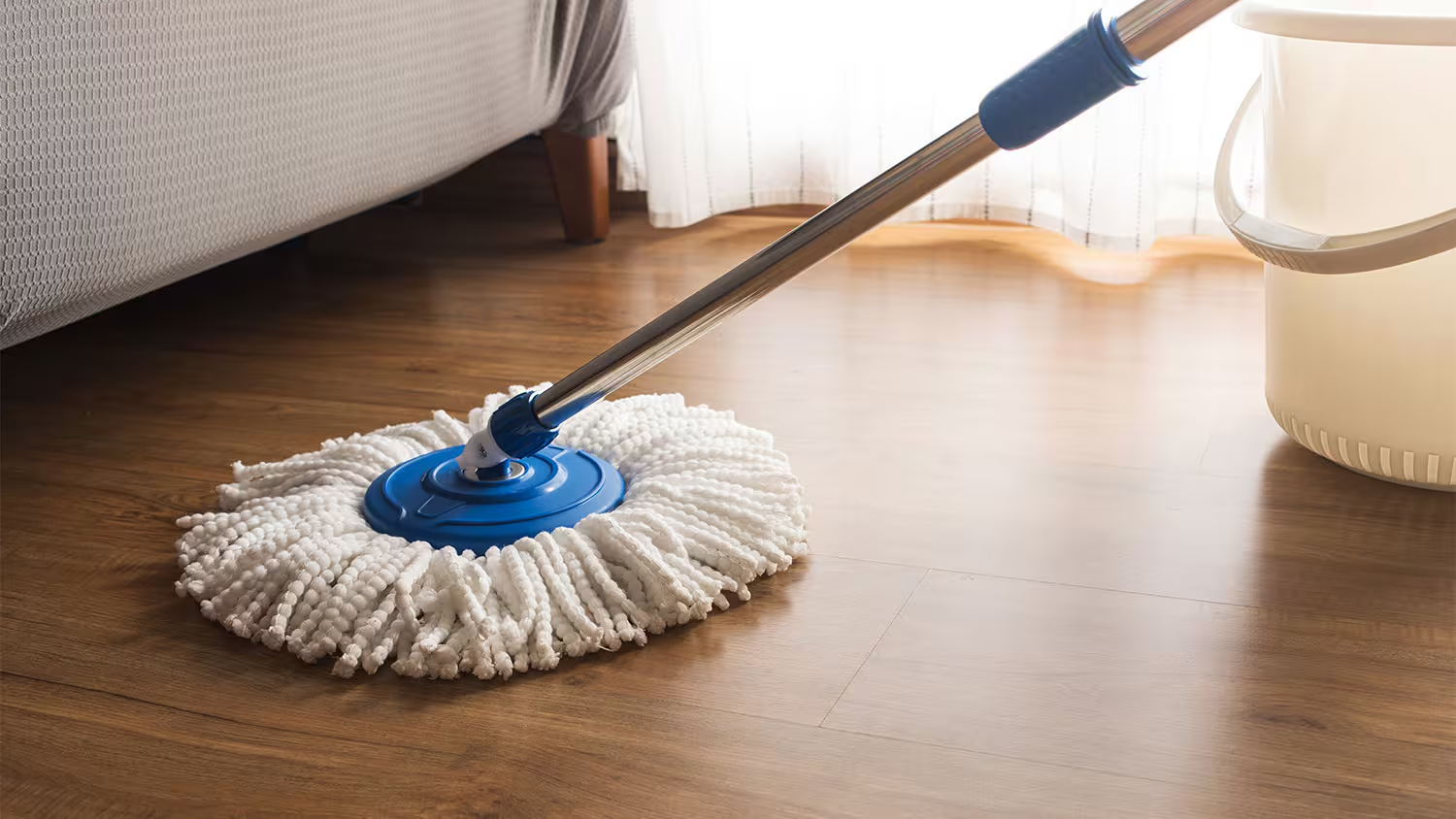Rugs are wonderfully practical items for homes. They stabilise a room’s temperature, absorb sound and provide cushioning underfoot. A soft landing in your bedroom also makes it that much easier to get out of bed in the morning, particularly if it’s a frosty one! And even if you have wall-to-wall carpet flooring in your bedroom, it’s worth considering an area rug to add colour, texture, pattern and warmth.
However, your bedroom rug should be the right proportion for the size of your bed. Its placement can also add visual interest and enhance the feeling of space. Here is our guide to choosing the perfect rug for your private sanctuary.
What Should I Consider When Choosing A Rug Size?
There is a range of factors to consider, but the two main ones are comfort and aesthetics. In terms of comfort in the main bedroom, you want a rug that is big enough to fit under your bed and then protrude out at least a metre on all sizes, so your feet stay warm when you get out of bed.
Ideally, it will also allow you to walk around the bed in comfort as well. If you have a King-sized bed, you’ll want a walkway of approximately 50 centimetres around the bottom and sides of your bed and a slightly bigger walkway if you have a Queen-sized bed.
If you choose a rug that fills up most of your bedroom, make sure you have around twenty centimetres between the rug and the walls. The rug should also not push up against the legs or edge of large pieces of furniture — there should be at least a five-centimetre gap. There should also be enough clearance for opening and closing doors.
In terms of looks, the central focus of a bedroom is usually the bed, however, rugs can also add visual interest and, if it’s an adequate size and well-placed, will create the illusion of space if you have a bedroom on the smaller side.
What Rug Placement Options Are There?
When it comes to choosing the right rug size, one large rug is often a better choice as it creates the illusion of more space, particularly in smaller bedrooms. A square or rectangular rug works best under any sized bed. But in addition to your bed, you may have two bedside tables on either side and possibly a bench at the foot of your bed.
Ultimately, you want to allow 60cm to 90cm on each side of the bed to have a soft, cosy space for your feet to land when you get out of bed. It’s also worth mentioning that you don’t want a rug half under bedside tables as the layout will look unbalanced and possibly cause that glass of water to topple off!
Here are a few options when it comes to placing an area rug under your bed.
Double Bed
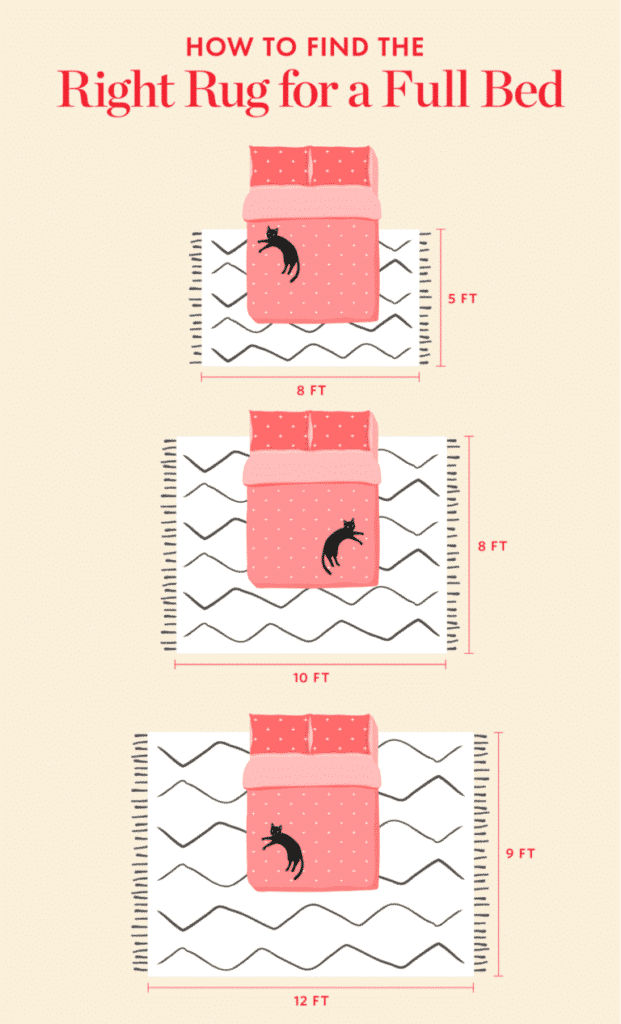
Image from Apartment Therapy
In terms of rug size under a double bed:
- Rugs under double beds should be a minimum of 290cm x 200cm in size.
Queen-Sized Bed
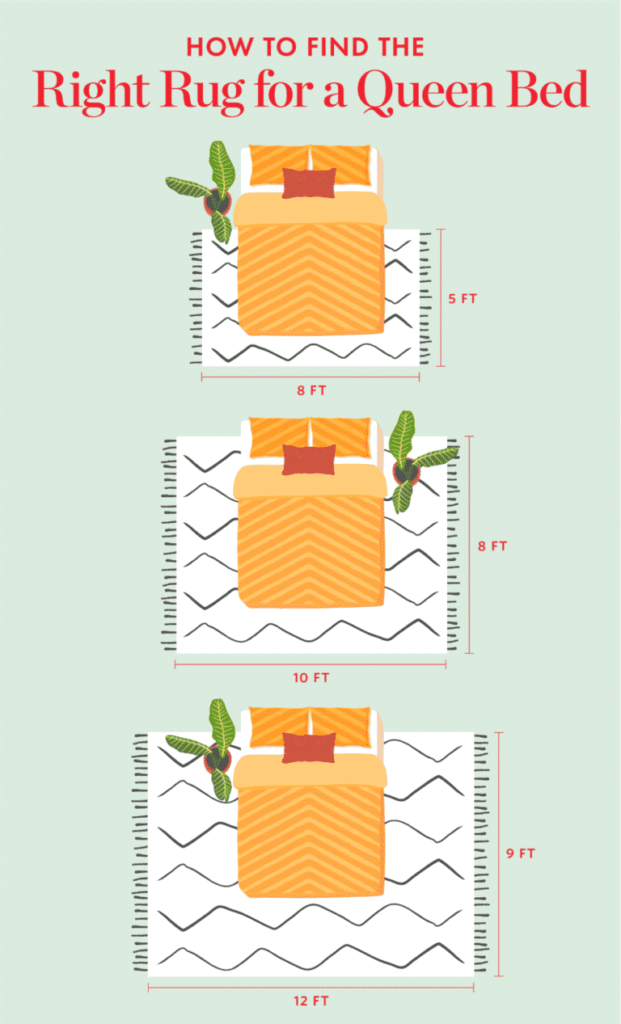
Image from Apartment Therapy
In terms of what size rug under a queen bed:
- If you choose to have the rug under your entire bed and bedside tables, opt for a rug that’s around 240cm x 300cm. An “extra large” version will be around 240cm x 330cm in size.
- If you choose the above but would like it a bit wider and also want to accommodate a bench at the end of your bed, opt for a rug that’s around 280cm x 360cm.
- If you only want the rug under the bottom two-thirds of your bed, choose one that’s around 150cm x 240cm. A “large” version will be around 200cm x 300cm in size.
King-Sized Bed
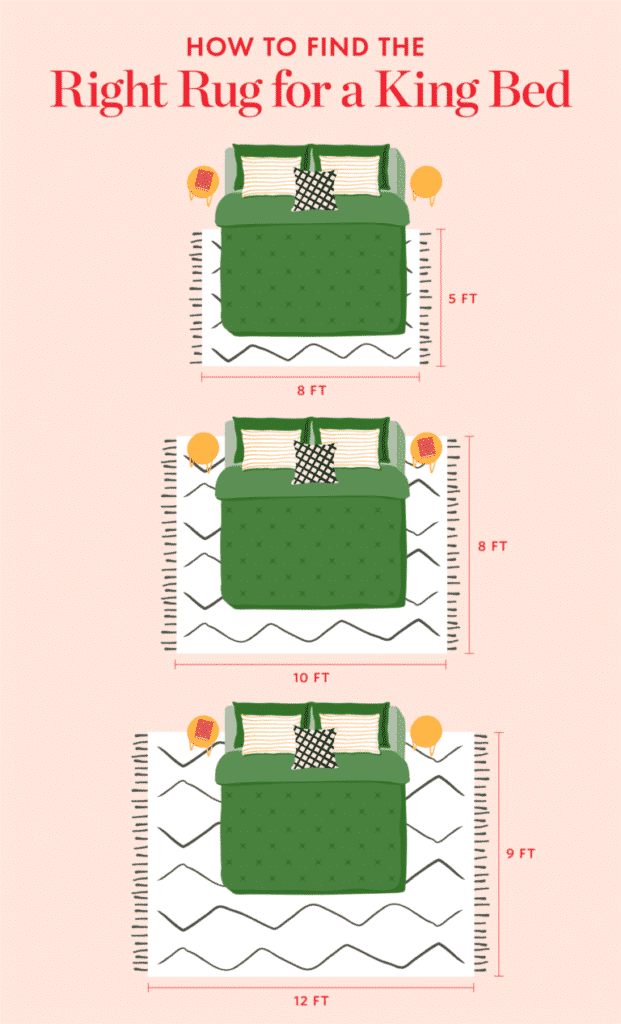
Image from Apartment Therapy
In terms of what size rug under a king bed:
- If you want your rug under the entire bed and bedside tables and you also have an end-of-bed bench, opt for a rug that’s around 280cm x 360cm. An “oversized” rug will be more like 300cm x 400cm.
- If you don’t want your rug under your bedside tables and just under the bottom two-thirds of your bed, opt for one that’s around 240cm x 300cm in size. An “extra large” version will be around 240cm x 330cm in size.
- If you have a larger bedroom (which is likely with a king-sized bed!), another option is to have two rugs on either side of your bed. This is an ideal option for those on a budget. Choose two rugs that are around 60cm x 150cm in size.
Children’s Bedroom
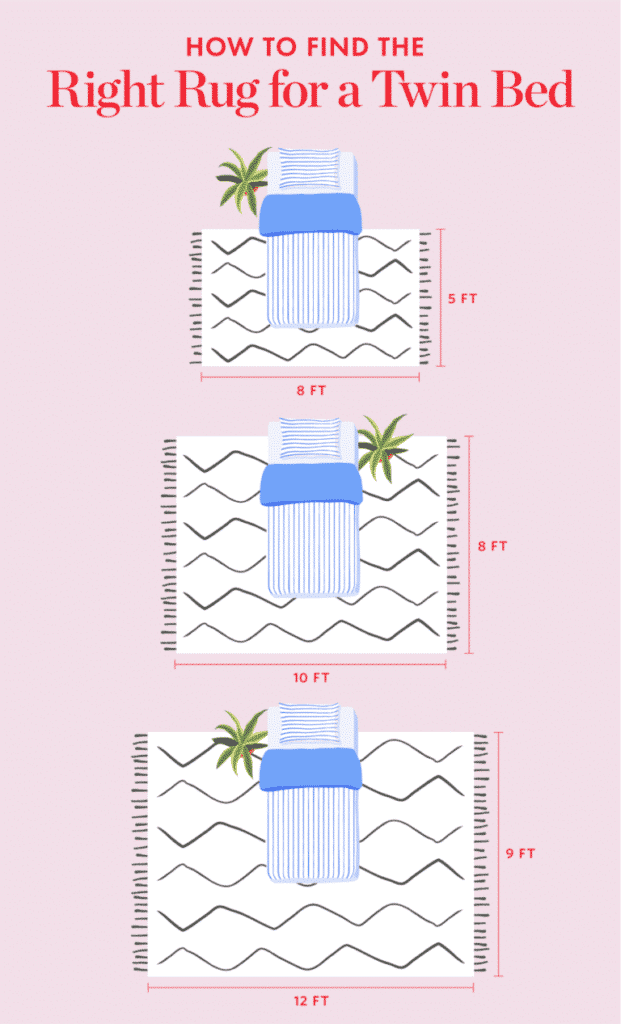
Image from Apartment Therapy
Young children’s beds are generally placed against a wall to allow for more floor area and to soften the odd tumble out of bed! For an averaged sized children’s room, opt for a “small” rug that’s around 160cm x 230cm, which will provide a comfortable play area. However, if their bed is in the centre of the room, a bigger rug will be needed.
What Rug Material Options Are There?
Bedrooms are generally low-traffic areas, so they are the ideal opportunity to showcase high-pile, velvety, plush or oversized loop-pile rugs to up the luxurious comfort. Having said that, if you have pets or young children, an easily maintained, stain-resistant version may be a better option.
It’s also worth noting that if you have your heart set on a plush carpet, be aware that “shadowing” is a feature of this style. This is because these types of rugs are created by cutting the loops and then shearing the tips of the fibres, so you may see a colour difference in parts of the carpet when you walk or vacuum over it.
Some options to consider include:
- Wool rugs — these are typically strong, soft, stain-resistant and have a luxurious texture.
- Wool-blend rugs — these will give you the natural appeal of wool as well as the hard-wearing properties of a synthetic rug.
- Synthetic rugs — these are typically durable, soft, stain-resistant, non-shedding and easy to vacuum.
- Flatweave rugs — these aren’t as durable as pile rugs but offer a unique “Bohemian” feel.
- Natural fibre rugs — these aren’t as easy to clean as other rugs but offer a casual, natural feel.
- Jute rugs— these are an affordable option and have good insulating and anti-static properties.
- Shag pile rugs — these are renowned for their deep, thick pile and soft, fluffy texture and appearance.
What Rug Colours And Pattern Options Are There?
This comes down to your personal style and preference, but because bedrooms are ultimately a place for rest, try to avoid rugs that are too visually stimulating. Your colour choice should link to the rest of your bedroom’s colour palette as well as complement other textural elements in the room. This includes window treatments, furniture, bedding and wall colour and finish. For example, if you have timber flooring or even vinyl flooring, then consider how the rug will contrast with the darker wooden tones. Options to consider include:
- Light, neutral, solid colours — can make a bedroom feel lighter and brighter.
- Dark, neutral, solid colours — can balance feminine bedrooms, making them feel more contemporary and “grounded”. They can also add contrast to white or light-coloured bedding and furniture.
- Bold colours and patterns — can give colour to mostly white rooms, contrast well with wooden flooring and solid-coloured bedding, and ultimately give a bedroom more personality.
- Light colours and patterns — can soften industrial-style bedrooms.
- Black and white — can add lightness and brightness and also add a sleek and modern feel.
References
- Michelle Ullman, 2021, How to choose the right area rug for under your bed, The Spruce
- 2021, How to choose the right rug size, West Elm
- 2021, How to pick a rug for your bedroom, Temple & Webster
- Tahn Scoon, Rugs 101 – the right size for your space, Choices Flooring
- Georgia Madden, 2017, Soft touch: How to choose carpet for your bedroom, Houzz






